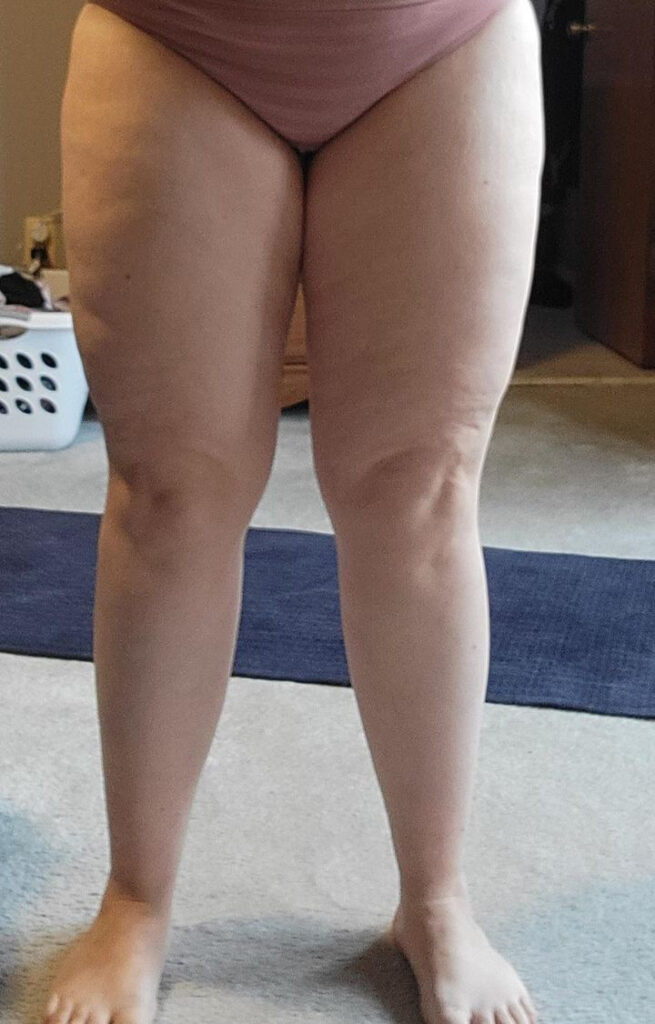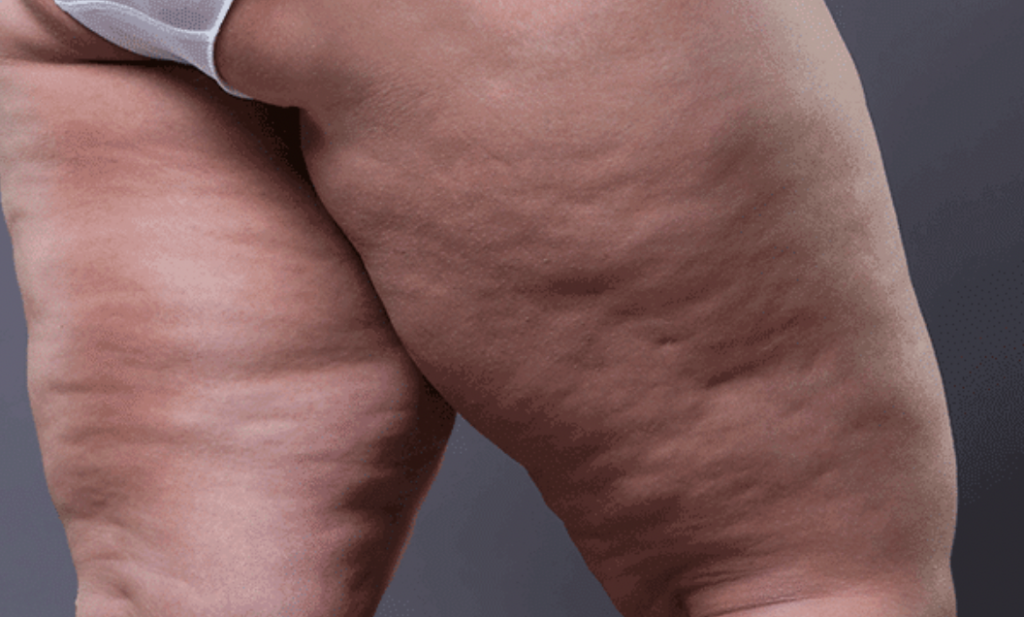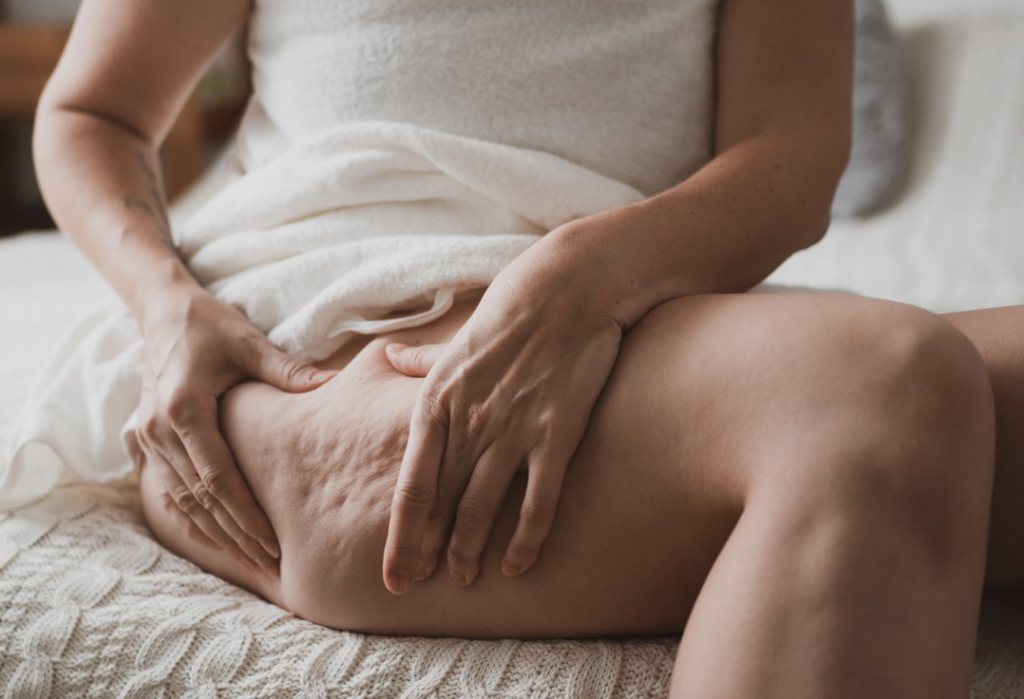Medically reviewed by Dr. Anuj Kr Purbey.
If you’ve ever noticed dimpling or uneven texture on your thighs (or legs in general), you may have assumed it was just Cellulite – most women have it, after all. But if the texture comes with pain, swelling, or doesn’t improve with diet and exercise, it could be something more: Lipedema.
Lipedema vs Cellulite can look similar at first glance, but they’re very different conditions. One is a common cosmetic issue. The other is a chronic fat disorder that requires daily management and care.
What is Lipedema?
Lipedema is a chronic medical condition that causes a symmetrical buildup of painful fat, usually in the lower body. Mainly affecting women, Lipedema is hormonally driven – often triggered at puberty, during pregnancy, or menopause.
Lipedema Symptoms include:
- Tender, painful Lipedema fat on the legs (and sometimes arms)
- Easy Lipedema bruising
- Disproportion between upper and lower body
- Swelling that worsens as the day progresses
- A column-like or cuff-like appearance at the ankles
What Is Cellulite?
Cellulite is extremely common – affecting up to 90% of women. It’s caused by fat deposits pushing through connective tissue beneath the skin, creating a dimpled or ‘orange peel’ appearance, especially on the thighs, hips, and bum.
It’s important to know:
- It’s not dangerous
- It’s not always caused by poor lifestyle choices
- It can affect slim and overweight people
- It typically doesn’t cause pain or swelling
Key Differences Between Lipedema vs Cellulite
|
Features |
Cellulite |
Lipedema |
|
Appearance |
Dimpled skin (orange peel) |
Sometimes smooth, swollen, nodular fat |
|
Pain |
Typically painless |
Often painful or tender to touch |
|
Swelling |
No significant swelling |
Swelling worsens throughout the day |
|
Symmetry |
Can be asymmetrical |
Usually symmetrical (legs or arms) |
|
Response to Diet/Exercise |
May reduce slightly |
Doesn’t respond significantly |
|
Affected Areas |
Thighs, buttocks |
Legs, hips, thighs, knees, ankles, sometimes arms |
|
Underlying Cause |
Connective tissue & fat structure |
Chronic fat disorder |
Is It Possible to Have Both Lipedema and Cellulite?
Yes – and many women do. Cellulite is incredibly common, so it’s possible to have Cellulite on top of Lipedema fat. That’s why it can be confusing and hard to distinguish between the two. The key difference is whether your Lipedema symptoms go beyond skin texture – like pain, heaviness, and swelling.
Signs You Might Have Lipedema (Not Just Cellulite)
If you’re not sure what you’re dealing with, here are some red flags that may suggest Lipedema:
- You bruise easily in your legs or arms
- Your lower half feels heavy, tight, or tender
- You’ve tried every diet – but your legs don’t change
- Your legs swell during the day (especially around your ankles or knees)
- You’ve been told you’re just ‘fat’ or have ‘water retention’ – but it doesn’t feel right
Why Misdiagnosis Matters
Many women are dismissed or misdiagnosed for years, being told they have stubborn fat, cellulite, or poor lifestyle habits. But Lipedema is a progressive condition – meaning it gets worse over time if left untreated.
An early and accurate Lipedema diagnosis is the first step toward managing your symptoms and protecting your mobility and mental health.
How to Get a Proper Diagnosis
Lipedema is a clinical diagnosis, which means there’s no blood test or scan to confirm it. That’s why it’s vital to see a professional who understands the condition. You can ask to be referred to a Lymphedema nurse or vascular specialist, or browse our Find a Lipedema Specialist directory for someone in your area.
You Are Not Overreacting – You Are Being Your Own Advocate
Whether it’s Cellulite, Lipedema, or both – your concerns are completely valid. If your body doesn’t feel right, it’s worth digging a little deeper. We know how often women with Lipedema are dismissed, told to try harder, or sent away without answers. Don’t give up. The more you learn, the more empowered you will be to speak up and get the help you deserve.
Lipedema vs Cellulite – Know the Signs, Trust Your Gut
If your ‘Cellulite’ is painful, swollen, or resistant to traditional weight loss methods, there’s a chance it could be Lipedema – and you deserve to know the difference. While Cellulite is harmless, Lipedema is a progressive condition that needs attention and care using conservative measures for Lipedema.
The more we talk about it, the more women get diagnosed earlier, treated faster, and finally feel understood. We’re all in this, together.
Disclaimer: This article has been medically reviewed by Dr. Anuj Kr Purbey to ensure accuracy. However, it is provided for informational purposes only and should not replace in-person medical advice. Always consult your doctor or a qualified specialist for diagnosis and treatment.



